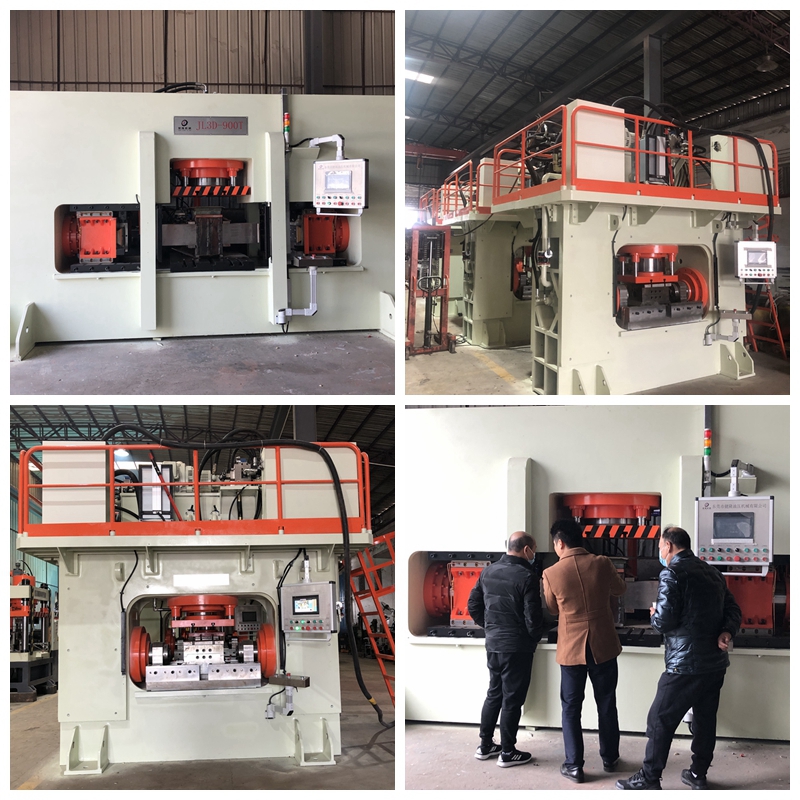With the application and development of science and technology in the hydraulics industry, forging hydraulic presses have also played a vital role in the automotive parts industry, becoming indispensable core equipment in the modern automotive manufacturing industry. They are primarily used to manufacture key structural and safety components for automobiles, and their functions can be summarized as follows. Let's take a look at what the editors of Jianlong Hydraulic Technology have to share for your reference when purchasing!

1. Manufacturing High-Strength, Lightweight Key Components
This is the core function of forging hydraulic presses. With the automotive industry's increasing demands for energy conservation, emission reduction, and safety performance, "lightweight" and "high strength" have become core trends.
1.1 Core Application Components:
1.1.1 Chassis System: Front axle, rear axle, steering knuckle (clamp), control arm, etc. These components are directly related to the vehicle's handling and safety.
1.1.2 Powertrain: Engine crankshaft, connecting rod, camshaft, gears, transmission shaft, etc. These are the core components of power transmission and require extremely high fatigue strength and wear resistance. 1.1.3 Suspension System: Wheel hubs, bearing seats, etc.
1.1.4 Body Structural Parts: In new energy vehicles and high-end models, high-strength forgings are also being used in A-pillar and B-pillar reinforcements, door anti-collision beams, and other components.
1.2 Advantages:
1.2.1 High Strength: The forging process uses tremendous pressure to refine the metal grains, densify the structure, and align the fiber flow with the part shape, significantly improving the part's strength, toughness, and fatigue life.
1.2.2 Lightweighting: Due to the significant improvement in material properties, part cross-sectional dimensions can be reduced while maintaining equivalent safety performance, thereby reducing weight. For example, using forged aluminum alloy control arms instead of cast iron parts can reduce weight by 30%-50%.
2. Improving Material Utilization and Production Efficiency
2.1 Near-Net Shape: Modern hydraulic forging presses, particularly multi-directional die forging and isothermal forging technologies, can achieve near-net shape or even net shape for complex parts. This means the shape and size of forged parts closely resemble the final product, significantly reducing subsequent machining allowances and saving raw materials and processing time.
2.2 Automated Integration: Modern hydraulic forging production lines are highly automated, integrating processes such as loading, heating, forging, trimming, and correction. This enables continuous, efficient, and high-volume production, meeting the large-scale production needs of the automotive industry.
3. Adaptability to the Processing Needs of Various Advanced Materials
A notable feature of hydraulic presses is their adjustable operating pressure and speed, which provides great flexibility in processing diverse materials.
3.1 Aluminum Alloy Forging: For components requiring urgent lightweighting, such as battery pack housings and subframes for new energy vehicles, large hydraulic presses are the preferred choice for forging high-strength aluminum alloy components.
3.2 Magnesium Alloy and Titanium Alloy Forging: These materials typically require forming at specific temperatures and speeds, and hydraulic presses can precisely control process parameters to meet their unique requirements.
3.3 High-Temperature Alloy Forging: Used for high-temperature components such as turbochargers.
4. Ensure consistent and stable product quality
Hydraulic presses maintain a constant maximum pressure throughout the entire stroke. This ensures that each forging undergoes sufficient and uniform plastic deformation, thus ensuring highly consistent and stable product quality during mass production. This is crucial for the production of automotive safety components.
5. Promote Technological Innovation and Structural Optimization
The improved capabilities of hydraulic forging presses provide automotive designers with greater freedom. Designers can design integrated parts with more complex structures and improved performance, transforming structures that were previously composed of multiple welded or assembled parts into single, integral forgings, further enhancing structural strength and reliability.

With the continuous advancement of technology, the production of high-end components that meet the stringent standards of modern automobiles is impossible without advanced large-scale hydraulic forging presses. This is especially true as new energy vehicles place higher demands on lightweighting and structural strength, making them even more crucial. For more information/advice on hydraulic forging presses or to purchase other high-quality hydraulic presses, please contact us (or scan the WhatsApp QR code below). Jianlong Hydraulic Technology will provide you with personalized, customized professional solutions and dedicated service.

Contact: Jojo
Phone: 18822971180
E-mail: lifuyan78@gmail.com
Whatsapp:+8618822971180
Add: Guangyi Industrial Park, No.2 Jinfu West Road, Tanglip, Liaobu Town, Dongguan City, Guangdong Province, China
We chat
